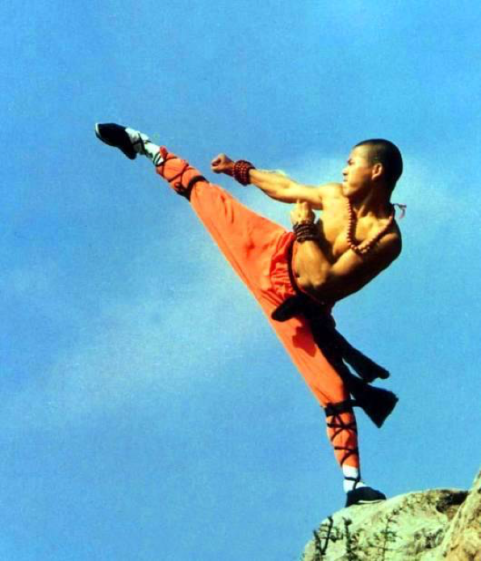China has a long history of martial traditions that include hundreds of different styles. Over the past two thousand years many distinctive styles have been developed, each with its own set of techniques and ideas. There are also common themes to the different styles, which are often classified by “families”, “sects” or “schools”. There are styles that mimic movements from animals and others that gather inspiration from various Chinese philosophies, myths and legends. Some styles put most of their focus into the harnessing of qi, while others concentrate on competition.
Geographical classifications— Northern Styles and Southern Styles
The traditional dividing line between the northern and southern Chinese martial arts is the Yangtze River. A well known adage concerning Chinese martial arts is the term “Southern fists and Northern kicks”. This saying emphasizes the difference between the two groups of Chinese martial arts. However, such differences are not absolute and there are many Northern styles that excel in hand techniques and conversely, there are many different type of kicks in some Southern styles. A style can also be more clearly classified according to regional landmarks, province, city and even to a specific village.


The main perceived difference between northern and southern styles is that the northern styles tend to emphasize fast and powerful kicks, high jumps and generally fluid and rapid movement, while the southern styles focus more on strong arm and hand techniques, and feature low stable stances and short powerful movements that combine both attack and defense.
External Styles and Internal Styles

External styles are often characterized by fast and explosive movements and a focus on physical strength and agility. External styles include both the traditional styles focusing on application and fighting, as well as the modern styles adapted for competition and exercise. Examples of external styles are Shaolin Kung fu, with its direct explosive attacks and many Wushu forms that have spectacular aerial techniques. External styles begin with a training focus on muscular power, speed and application, and generally integrate their qigong aspects in advanced training, after their desired “hard” physical level has been reached. Most Chinese martial art styles are classified as external styles.


Internal styles focus on the practice of such elements as awareness of the spirit, mind, qi (breath, or energy flow) and the use of relaxed leverage rather than unrefined muscular tension, tension that soft stylists call “brute force”. There are only three Chinese styles that are universally recognized as internal: Taijiquan, Baguazhang, and Xingyiquan.


Components of internal training includes stance training, stretching and strengthening of muscles, as well as on empty hand and weapon forms which can contain quite demanding coordination from posture to posture. Many internal styles have basic two-person training, such as pushing hands. A prominent characteristic of internal styles is that the forms are generally performed at a slow pace. The goal is to learn to involve the entire body in every motion, to stay relaxed, with deep, controlled breathing, and to coordinate the motions of the body and the breathing accurately according to the dictates of the forms while maintaining perfect balance. But at an advanced level, and in actual fighting, internal styles are performed quickly.
Chinese martial arts can also be divided according to religion, imitative-styles, and family styles. There are distinctive differences in the training between different groups of the Chinese martial arts regardless of the type of classification. However, few experienced martial artists make a clear distinction between internal and external styles, or subscribe to the idea of northern systems being predominantly kick-based and southern systems relying more heavily on upper-body techniques.
by Xiao Xiao @ InteractChina.com
About Interact China
“A Social Enterprise in E-commerce Promoting Oriental Aesthetic Worldwide”
Aileen & Norman co-founded Interact China in 2004 with specialization in fine Oriental Aesthetic products handmade by ethnic minorities & Han Chinese. Having direct partnerships with artisans, designers, craft masters and tailors, along with 12 years of solid experience in e-commerce via InteractChina.com, we are well positioned to bridge talented artisans in the East with the rest of the world, and directly bring you finely selected products that are of good quality and aesthetic taste.
So far we carry 3000+ goods covering Ladies Fashion, Tailor Shop, Home Furnishings, Babies & Kids, Painting Arts, Textile Arts, Carving Arts, Tribal Jewelry Art, Wall Masks and Musical Instruments. Our team speak English, French, German, Spanish and Italian, and serve customers worldwide with passion and hearts.
P.S. We Need People with Similar Passion to Join Our Blogging Team!
If you have passion to write about Oriental Aesthetic in Fashion, Home Decor, Art & Crafts, Culture, Music, Books, and Charity, please contact us at bloggers@interactchina.com, we would love to hear from you!


